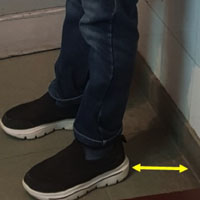Role of NASA 10-minute Lean Test in diagnosing postural orthostatic tachycardia syndrome: a preliminary study in young population

All claims expressed in this article are solely those of the authors and do not necessarily represent those of their affiliated organizations, or those of the publisher, the editors and the reviewers. Any product that may be evaluated in this article or claim that may be made by its manufacturer is not guaranteed or endorsed by the publisher.
Authors
Postural orthostatic tachycardia syndrome (POTS) is a form of autonomic imbalance characterized by abnormally increased heart rate (HR) and various symptoms of orthostatic intolerance (OI). This study aimed to determine POTS in adolescents using the National Aeronautics and Space Administration (NASA) 10-minute Lean Test. This cross-sectional study was conducted at Government Medical College, Srinagar, JK, India, between October 2017 and November 2019. Adolescents with symptoms of OI were enrolled for this study, and the NASA 10-minute Lean Test was performed. Characteristics of the POTS group were compared with the non-POTS group. There was a significant difference in BMI (P<0.0001) between the POTS and non-POTS groups. However, the number of females with features of POTS was greater than males. There was a significant difference in resting HR between the two groups (P<0.0001). During upright posture, there was a significant difference in maximum upright HR between the two groups (P<0.0001), the highest increment in upright HR also differed significantly (P<0.0001). POTS group had significantly higher HR than the non-POTS group. It may be inferred from this preliminary study that NASA 10- minute Lean Test can be used to diagnose POTS.
How to Cite

This work is licensed under a Creative Commons Attribution-NonCommercial 4.0 International License.
PAGEPress has chosen to apply the Creative Commons Attribution NonCommercial 4.0 International License (CC BY-NC 4.0) to all manuscripts to be published.






